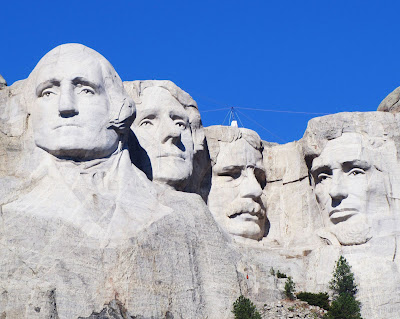We arrived at Denver for an overnight stay before leaving the Plains to go west across the Rockies to Moab. The "Mile High City" looked clinically modern with its pedestrianised 16th Street Mall enclosed by high rise buildings.
From the window of the dining room on the top floor of our hotel the lights of Denver illuminated the city landscape below.
Probably the most spectacular setting for dinner on the whole trip.
Next morning we made our way west along Interstate 70 to cross the Rocky Mountains via Loveland Pass.
We paused for a leg stretch at Vail, a relatively recent ski town creation of semi-Alpine and fake Tyrolean-style chalets awaiting the first snowfall of winter.
160 miles west of Denver we began our descent through Glenwood Canyon where we joined the upper reaches of the Colorado River.
Between Grand Junction and Crescent Junction we passed Book Cliffs.
The cliffs are largely composed of sedimentary materials. The name comes from the cliffs of Cretaceous sandstone that cap many south-facing buttes that appear similar to a shelf of books.
Arches National Park is in eastern Utah near Moab. It is known for its natural sandstone arches of which some 2000 have been preserved, including the world-famous Delicate Arch.
Forty-three arches have collapsed due to erosion since 1970.
The sandstone forms narrow ridges or fins. Small holes appear and develop into larger windows and then arches. Water from rain or snow dissolves the calcium carbonate that cements the sandstone grains together. The loose sand is washed away. The arches grow larger and eventually collapse.
As well as arches other identifiable monolithic landmarks are to be seen such as The Organ.
The Tower of Babel
The Three Gossips
There are petrified sand dunes.
A Balancing Rock
and a Parade of Elephants.
All this in one national park.
Even a Double Arch.
Before we retired for the night we even had time for a boat trip on the Colorado.
and Balancing Rock.






















































